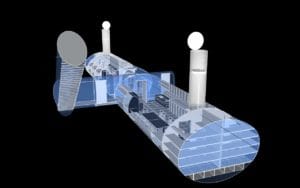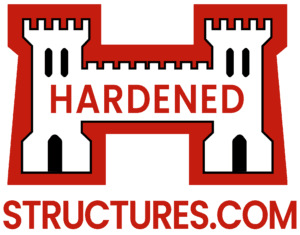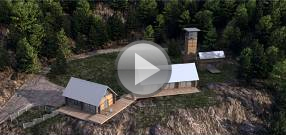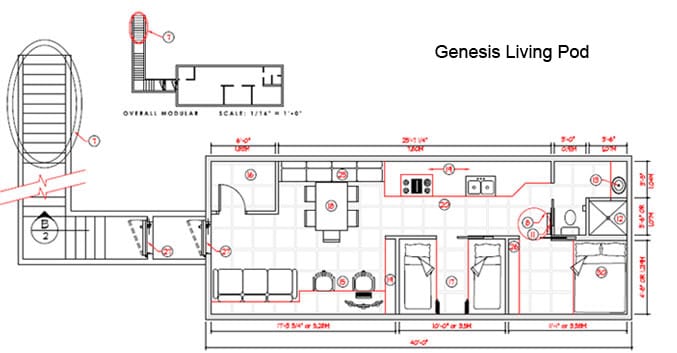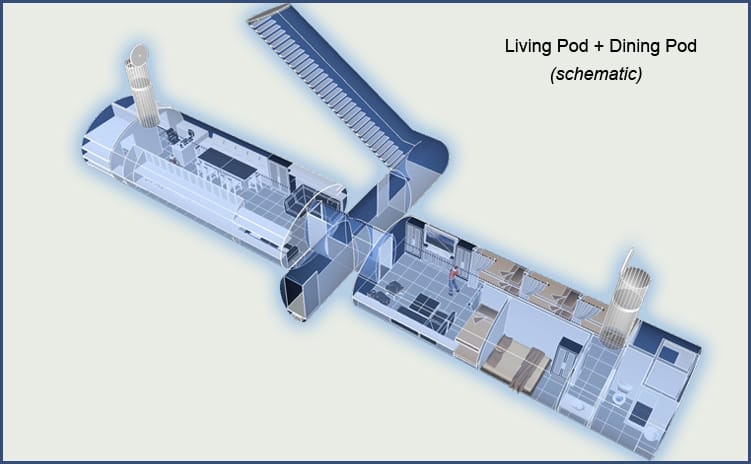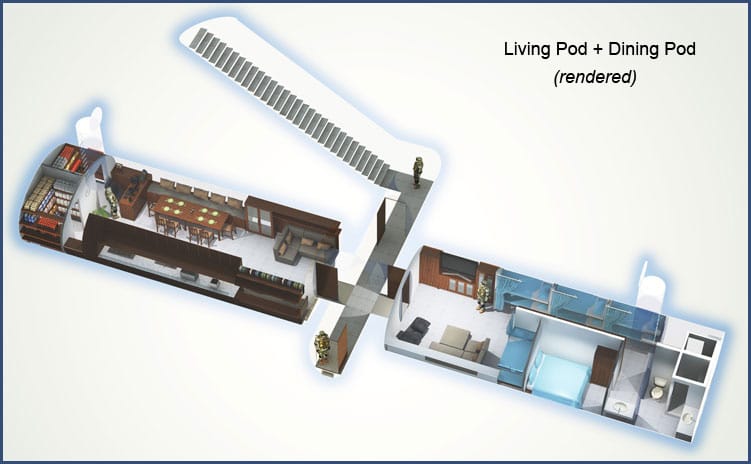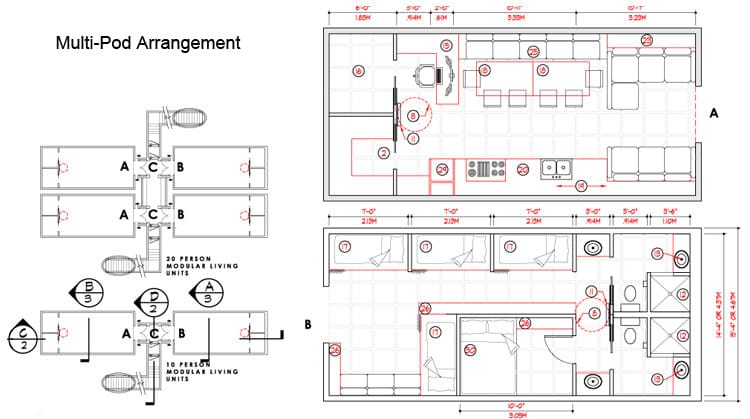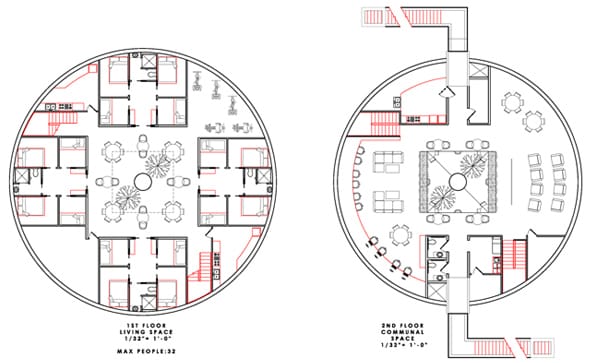Several fiberglass subterranean shelter manufacturers claim that their shelters are HEMP/EMP protected and are MIL-STD-188-125 and MIL-HDBK-423 compliant. THIS IS NOT TRUE! If your shelter is not comprised of a conductive surface (i.e. metal) then it CANNOT be HEMP/EMP protected.
Electromagnetic fields pass right through fiberglass without attenuation (indeed – many antenna coverings and radomes are actually MADE OUT OF FIBERGLASS – because electromagnetic fields pass right through them! Even if painted with conductive coatings, fiberglass shelters will not protect you against EMP threats.
If you are considering a fiberglass shelter, then you are eliminating any possibility of protecting yourself from an EMP, because an EMP shelter has to be specifically designed and fabricated out of metal (preferably steel, for low-frequency performance) with each and every penetration engineered to keep out EMP energy. IF YOU ARE CONSIDERING BUYING A FIBERGLASS UNDERGROUND SHELTER FOR EMP PROTECTION, YOU ARE BUYING YOURSELF A TOMB!
This is why Hardened Structures provides quality steel enclosures – so that we can protect you from as many threat scenarios as possible – including EMP threats.
If you are going to invest in a shelter, ONLY a quality Hardened Structures steel shelter can protect you and your family from a broad spectrum of disaster scenarios that includes HEMP and EMP protection.
Do your homework on HEMP/EMP protection – here is what the U.S. Military; MIL-HDBK-423 specification says about HEMP/EMP protection:
The HEMP/EMP shield serves three functions as part of the EMP barrier:
- It prevents potentially damaging radiated electromagnetic stresses from an EMP event from reaching sensitive equipment inside the protective shelter by field reflection and attenuation (HS Comment: this is something fiberglass cannot do).
- HEMP-induced transients on exposed metal pipes and electrical conductors are deposited on the outer shield surface by the actions of point-of-entry protective devices and prevented from entering the protected volume by the skin effect – (HS Comment: whereas with a fiberglass shelter – the energy is conducted right INTO your shelter through pipes and wires and into your sensitive equipment!)
- The conductive shelter shield limits the number of ways that electromagnetic energy can enter the facility. (HS Comment: With a fiberglass shield there are unlimited ways in which electromagnetic energy can enter the facility)
The conductive steel shield is the primary element of the electromagnetic barrier. The shield, exclusive of the penetrating conductor and aperture treatments, consists of the metallic enclosure portions of the electromagnetic barrier. The role of the shield is to exclude electromagnetic fields from the protected volume of the facility. The conductive shield acts to reflect the incident fields and severely attenuate those fields and currents that penetrate into the metal. (Comment: in other words, fiberglass cannot be an EMP shield!)
To be effective, the shield must exclude or greatly attenuate incident electric and magnetic fields. To accomplish this, electromagnetic shielding surrounds a volume with a conductive layer that is thick enough so that highly-mobile electrons can arrange themselves and produce surface currents and charges that oppose the incident fields. This is the Faraday cage principle. External electric fields perpendicular to the surface are terminated on surface charges that form on the shield as its free electrons respond to the incident field. The tangential electric field is shorted and reflected by the conductive shield. Magnetic fields perpendicular to the surface induce eddy currents in the shield’s surface. This, in turn, produces a magnetic field that opposes (i.e. “cancels”) the incident field in and beyond the shield (inductive magnetic shielding). The tangential magnetic field induces current on the shield, which in turn produces a magnetic field that adds to the incident field (field doubling). (HS Comment: The end result is that with a steel EMP shield – you are fully protected from an EMP, with a fiberglass shield YOU ARE COMPLETELY VULNERABLE TO AN EMP)
The essence of a good shielding layer is the maintenance of good electrical conductivity, or low resistance, over all portions of the surface. Leakage through a shield surface occurs to the extent that voltages develop across resistances or impedances in the surface, and these voltages act as sources to reradiate fields into the interior of the shielded volume. The bulk of the shield surface will be made up of metal sheet. (HS Comment: Fiberglass has high-resistance over all portions of the shield – it optimizes the transmission of EMP energy into the shield enclosure!)
From MIL-STD-188-125-1:
“4.3.1 Facility shield. The facility HEMP shield shall be a continuous conductive enclosure (i.e. NOT FIBERGLASS) that meets or exceeds shielding effectiveness requirements of this standard. The shield is normally constructed of a metal, such as steel or copper. Other materials may be used if they can provide the required shielding effectiveness and are fully compatible (HS Comment: Fiberglass is NOT compatible, nor can it ever be made compatible) with the Point-of-Entry protective treatments and grounding requirements.”
Listen to the company with Professional Engineers that build HEMP/EMP protected shelters for the U.S. Military!
Hardened Structures STRONGLY recommends that if you do not purchase a steel shelter that includes HEMP/EMP protection that you make sure you do not make a possibly critical error in your protection and survival plans and purchase a non-conductive fiberglass shelter – it could be the worst mistake you ever make and ruin even the most carefully thought out disaster preparedness plans.
Buy a steel shelter than can be configured to protect you against HEMP/EMP events, Hardened Structures will help you choose the right shelter for you, those important to you, and the components/equipment that will make your disaster preparedness plans work for you.
